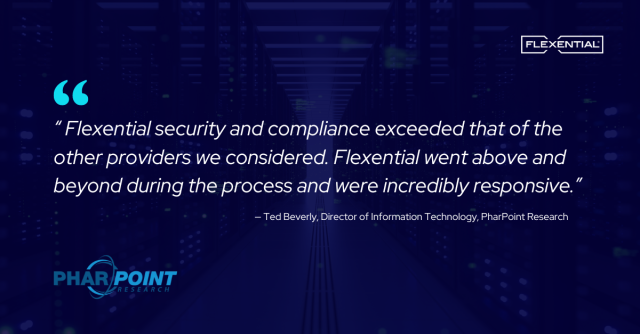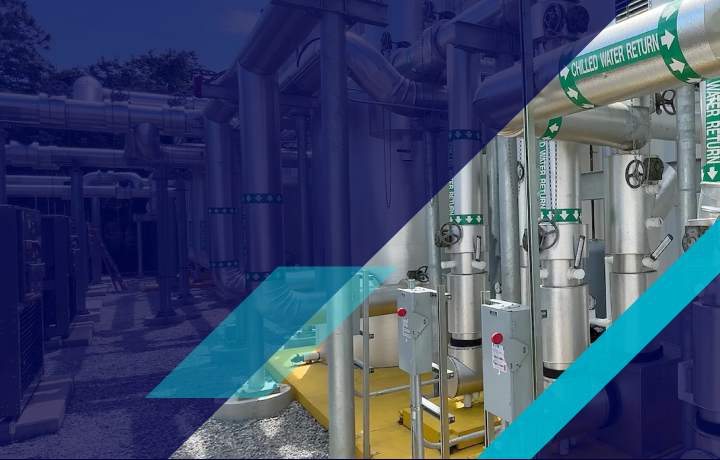Everything to know about cloud data privacy and compliance
Did you know that 39% of organizations have more than half their workloads in the cloud? And Gartner is predicting that more than half of enterprise IT spending will shift to the cloud by 2025!

As the digital world evolves, the importance of cloud data privacy continues to grow. This blog post will provide a comprehensive guide to data protection in the cloud, ensuring your organization can confidently navigate the digital landscape.
Introduction to cloud data privacy
Cloud data privacy is all about safeguarding any data in the cloud from loss, leakage, or misuse through breaches, exfiltration, and unauthorized access. As more organizations shift their workloads to the cloud, addressing cloud data security concerns becomes increasingly essential. Inconsistent cloud data protection can lead to data breaches and loss of sensitive information, which is why cloud data privacy should be a top priority for any organization working in the digital realm.
What is cloud privacy?
Cloud privacy involves safeguarding sensitive data stored, processed, and managed in cloud environments by implementing effective cloud data protection practices. As organizations migrate to the cloud, evaluating existing security strategies and tools is essential to ensure they meet the security requirements of protection in the cloud environment.
One of the critical aspects of cloud data privacy is the use of encryption techniques to protect data, both at rest and in transit. Implementing privacy-by-design principles and proper data access control also play a significant role in maintaining cloud data protection.
Why is cloud data privacy important
Cloud data privacy is crucial for maintaining customer trust, ensuring regulatory compliance, and preventing breaches. While cloud service providers (CSPs) are responsible for certain aspects of cloud security, it follows the shared responsibility model, meaning that cloud security is a shared endeavor between the CSP and its customers.
Taking inventory of sensitive data and complying with data privacy regulations, such as GDPR and HIPAA, are essential aspects of cloud data protection. Organizations can better protect their sensitive data in the cloud by implementing privacy-by-design principles and regularly reviewing policies and procedures.
Cloud computing and data privacy
Cloud computing refers to servers, services, software applications, databases, containers, and workloads accessed remotely. Data privacy has become a pressing concern for organizations with the increasing adoption of cloud computing, so let’s explore the types of cloud services and deployment models and how cloud computing impacts data privacy.
Types of cloud services
There are three primary cloud services:
- Infrastructure as a Service (IaaS). IaaS provides virtualized computing resources via the internet, allowing users to access resources such as servers, storage, and networking as needed.
- Platform as a Service (PaaS): PaaS offers a platform for users to develop, run, and manage applications without managing the underlying infrastructure, providing a cost-effective and scalable solution.
- Software as a Service (SaaS): SaaS allows users to access applications over the internet, following a pay-as-you-go model and offering on-demand computing resources.
Cloud deployment models
There are four cloud deployment models: public, private, hybrid, and multi-cloud.
- Public clouds are accessible to the public via the Internet and are owned and operated by external cloud service providers.
- Private clouds are hosted on a private network and accessible to a limited number of users, either managed by the organization itself or managed by a third-party cloud service provider.
- Hybrid clouds combine public and private cloud services, offering the scalability and cost-effectiveness of public clouds while ensuring the security and control of private clouds.
- Multi-cloud goes beyond the agility of a single cloud environment, giving businesses access to a broader range of services and locations, which promotes operational efficiency, controls costs, strengthens security and resilience, and drives performance and business outcomes.
Want the agility of public cloud with the security of private cloud? Explore Flexential multi-tenant cloud, powered by VMWare.
Common cloud data privacy challenges
When it comes to ensuring cloud data protection, organizations face several challenges, including cloud storage and locality, secure data transfer and encryption, and third-party integrations. This section will delve into these challenges and discuss the potential security risks they pose.
Data storage and locality
Data storage and locality issues can arise when dealing with compliance and data residency regulations. For example, the Health Insurance Portability and Accountability Act (HIPAA) stipulates that hospitals must execute daily backups.
Ensuring compliance with such regulations is critical for organizations handling sensitive data in the cloud.
Data transfer and encryption
Data transfer and encryption challenges can occur when securely transmitting data between multiple cloud environments. Organizations should implement additional encryption measures and use secure connections, such as SSL, to ensure data security during transfer. Adhering to data protection regulations is also crucial during data transfer.
Third-party access and integrations
Access to cloud data by third-party entities, such as cloud service providers, subcontractors, or government agencies, involves the potential risks of unauthorized access, data breaches, or misuse of data. To address these concerns, various legislation and regulations have been implemented.
- General Data Protection Regulation (GDPR) is a comprehensive data protection law enacted by the European Union (EU) to safeguard the privacy and personal data of EU citizens. It applies to any organization that handles the personal data of EU residents, regardless of their location. The GDPR imposes strict requirements on data controllers and processors, including the need for explicit consent, the right to access and erase personal data, data breach notification, and robust security measures.
- California Consumer Privacy Act (CCPA) is a state-level privacy law enacted in California, USA, to enhance consumer data privacy rights. It grants California residents greater control over their personal information held by businesses. The CCPA gives consumers the right to know what personal data is collected, the option to opt out of the sale of their data, and the ability to request deletion of their data. It also imposes obligations on businesses to provide transparent privacy policies and reasonable security measures.
- Health Insurance Portability and Accountability Act (HIPAA) is a US federal law that governs the privacy and security of protected health information (PHI). It applies to healthcare providers, health plans, and other entities involved in the healthcare industry. HIPAA establishes standards for the storage, transmission, and handling of PHI to ensure its confidentiality and integrity. Covered entities must implement safeguards, including administrative, physical, and technical measures, to protect patient data.
Apart from the GDPR, CCPA, and HIPAA, there are numerous other regulations worldwide that address cloud data privacy. These regulations vary by region and industry and may include data protection laws, sector-specific guidelines, and standards. Examples include the Personal Information Protection and Electronic Documents Act (PIPEDA) in Canada, the Data Protection Act 2018 in the United Kingdom, and the Payment Card Industry Data Security Standard (PCI DSS) for the payment card industry.
Third-party integrations, such as using APIs developed by external sources, can also pose potential security risks to organizations. These risks include data leakage, unauthorized access, and malicious code injection. Organizations must ensure that third-party integrations are properly secured and monitored to mitigate these risks.
Five essential elements of cloud data privacy
Organizations need to implement essential best practices for cloud workloads to maintain privacy. This includes vendor selection and due diligence, data classification and access control, encryption and tokenization techniques, intrusion detection and response systems, and auditing and monitoring of cloud environments.
1. Vendor selection and due diligence
When selecting a cloud vendor, evaluating their security measures and breach response plans is crucial. Assessing a provider’s authentication, access control, encryption, and intrusion detection capabilities will help ensure your organization’s data remains secure in the cloud.
It’s also essential to understand the vendor’s security policies and procedures.
2. Data classification and access control
Data classification and access control involve organizing data into categories based on sensitivity and importance and controlling access to that data. Implementing identity and access management (IAM) systems can help organizations automate access management tasks and provide precise access controls.
Adhering to the principle of least privilege is also essential, ensuring that users have access only to the data centers and cloud resources necessary for their job responsibilities.
3. Encryption and tokenization
Encryption and tokenization techniques are vital for protecting data at rest and in transit. File-level encryption adds a layer of protection to data before uploading it to the cloud.
Implementing “sharding” can further improve cloud data protection by dividing data into smaller segments and storing them in multiple locations, making it difficult for malicious actors to reconstruct the entire file.
4. Intrusion detection and response
Intrusion detection and response systems identify and address malicious activity in cloud environments. Signature-based and anomaly-based intrusion detection methods can be employed to monitor network traffic for suspicious activity. Intrusion response involves addressing an attack to adhere to the security policy and reduce potential damage.
5. Auditing and monitoring
Auditing and monitoring cloud data storage environments are essential to maintain visibility and ensure compliance with data privacy regulations. Regularly reviewing and updating policies and procedures can help organizations identify potential risks and vulnerabilities and safeguard cloud data.
Organizations should also consider implementing automated tools to monitor cloud environments for changes or unauthorized access.
Cloud data privacy best practices
In addition to essential best practices, organizations can further enhance their cloud data protection by conducting a risk assessment, developing a data privacy policy, implementing privacy-by-design principles, educating employees and stakeholders, and regularly reviewing and updating policies and procedures.
Conducting a risk assessment
Performing a risk assessment allows organizations to identify potential vulnerabilities and areas for improvement. It is essential to consider potential risks such as data breaches, unauthorized access, data loss, and other security threats.
Analyzing the likelihood and impact of these risks and implementing control measures can help minimize potential harm.
Developing a data privacy policy
A comprehensive data privacy policy outlines the roles, responsibilities, and procedures for managing the personal information of customers or users. It is essential to define all stakeholders' roles and responsibilities in data processing, including data collection, storage, access, and transfer procedures.
Establishing a data privacy policy helps organizations comply with privacy standards such as ISO/IEC 27018.
Implementing privacy-by-design principles
Privacy-by-design principles aim to embed privacy into the design and operation of products, services, and systems by default. Implementing these principles can help organizations ensure that data privacy is considered throughout development, decrease the likelihood of data breaches, and enhance customer trust and confidence.
Incorporating privacy-by-design principles involves conducting a risk assessment, creating a data privacy policy, and providing training to employees and stakeholders.
Educating employees and stakeholders
Educating employees and stakeholders on the importance of data privacy and their role in maintaining it is crucial for a successful cloud and data center privacy strategy. Employees and stakeholders should be trained to adhere to data privacy policies and procedures and report any potential data privacy violations.
Regularly reviewing and updating policies and procedures
Periodically reviewing and updating policies and procedures helps organizations stay current with evolving regulations and threats. Periodic assessments and modifications of policies and procedures ensure their efficacy, compliance with regulations, and alignment with industry best practices.
Evaluating cloud providers for data privacy
When evaluating cloud providers based on their data privacy capabilities and offerings, it’s crucial to assess their security measures, such as authentication, access control, encryption, and intrusion detection. Organizations should also conduct risk assessments to identify potential threats and vulnerabilities and ensure that the cloud provider takes appropriate measures to protect data.
Compliance with privacy standards, such as ISO/IEC 27018, should also be considered when assessing cloud providers for data privacy.
Summary
In conclusion, cloud data privacy is critical to today’s digital landscape. Organizations must implement essential best practices, such as vendor selection and due diligence, data classification and access control, encryption and tokenization, intrusion detection and response, and auditing and monitoring, to protect their sensitive data in the cloud. Organizations can further enhance their cloud data protection by conducting risk assessments, developing a data privacy policy, implementing privacy-by-design principles, educating employees and stakeholders, and regularly reviewing and updating policies and procedures. By choosing the right cloud provider, your organization can navigate the challenges of cloud data privacy and secure your sensitive data in the cloud.
Flexential and your cloud data privacy
Flexential can help organizations achieve and maintain cloud data privacy through its comprehensive cloud-based data storage solutions and services. By implementing essential best practices and offering robust data privacy solutions, Flexential ensures that your organization’s sensitive data is protected in the cloud.
With our commitment to data privacy, Flexential can be your trusted partner in navigating the complex landscape of cloud data protection. Learn more about Flexential cloud service today!







